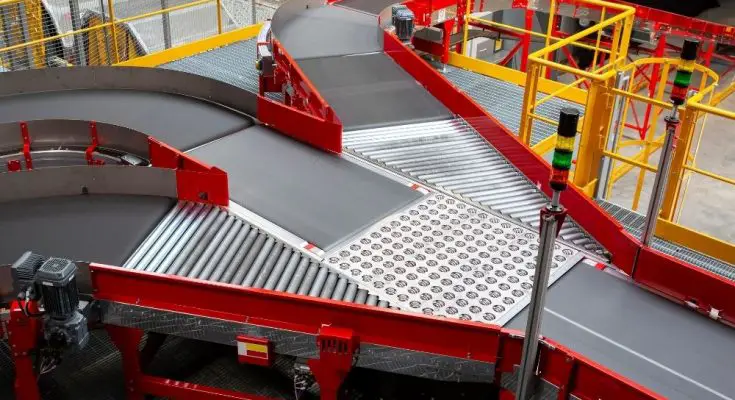Conveyor belts are major players in numerous industries and facilities, from construction to print. They handle food, carry large products, transport goods, and help package items. Various moving parts and components play into the functionality of a conveyor. Here is what you need to know about a conveyor system design to understand how this versatile industrial equipment works.
Pulley System Mechanics
Conveyor belts operate under a pulley system. Pulleys consist of two wheels connected by a single string (or, in this case, a belt). Typically, pulley systems are used to lift and drop an object, like a bucket in a well. Conveyor systems use the same mechanics, but instead of lifting objects, they simply rotate and move a belt across different distances. However, some conveyor systems feature inclines, lifting objects on the track, just not to the same degree.
Conveyor Belt Bands
Conveyor belt bands are the star players in a conveyor system. They come in an array of forms, from rubber to urethane belts. The variety of belt options offers a range of properties, providing various benefits for different industries and uses. Popular belt attributes that all industries look for include high durability, moisture resistance, abrasion resistance, and a long life span.
Roller Track Systems
Between the two main wheels comprising the pulley system are a bunch of other wheels and rollers that support the conveyor’s belt. On top of providing support to hold and balance carried items, the rollers also act as a tracking system, guiding the belt through a set course and direction down the assembly line. Without a proper track system, belts risk losing tension, slippage, and movement malfunction.
Assembly Line Accessories
The printing and packaging industry uses folder-gluer belt conveyors. These conveyor systems consist of assembly line sections, from the cutting to the folding of the cardboard. In order to carry out the various processes in each section, different mechanical parts such as gluing and folding machinery. Depending on the industry and use of the conveyor system, some conveyors come embellished with different accessories and added mechanics. Other accessories commonly added to a basic conveyor system include a loading chute, package stops, multi-directional tracks, and robotic arms and cranes to lift or add to objects.
Industry Adapted Equipment
Along with adding various accessories, there are numerous other ways conveyor belts are adapted to better suit the industry and job assigned to them. As previously mentioned, conveyor belts come in various forms, consisting of different materials and properties. The best materials for food handling conveyors differ from the ideal belts for a construction site conveyor system. Another adaption of belting systems includes incline and decline in tracking systems. Depending on the final desired location of the carried objects, some industries may require their conveyor systems to use incline features to carry certain items to high-reach locations.
Conveyor systems’ importance across numerous industries makes them one of the most useful inventions to date. As technology continues to advance, so does the future of conveyor systems. Understanding conveyor systems’ current design not only helps us understand the mechanics of this great invention but also potential ways to further improve the system, creating new potentials for enhancing numerous industries and productions.



